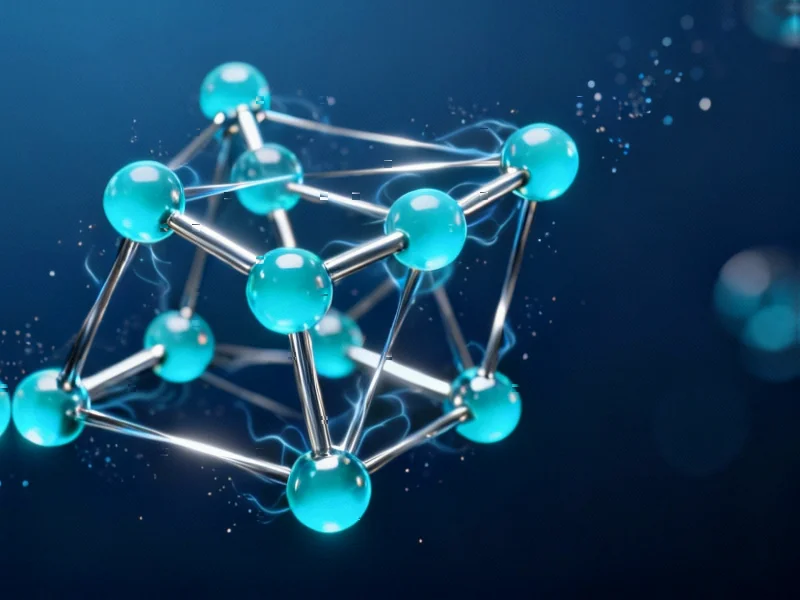Breakthrough in Quantum Material Predictions
Recent simulations indicate that ultracold polar molecules could form novel strongly correlated states of matter, according to research published in Physical Review Letters. Scientists from TU Wien and the Vienna Center for Quantum Science and Technology reportedly used advanced computational methods to model behaviors in Bose-Einstein condensates (BECs) of polar molecules, which were first experimentally realized in 2023. The study suggests these systems may self-organize into quantum droplets, superfluid layers, and crystalline structures without external confinement.
Table of Contents
From Atomic to Molecular Quantum Gases
Sources indicate that while BECs of ultracold atoms have been studied for years, molecular BECs present unique opportunities due to their enhanced complexity. “The dipole moments in atoms are magnetic and this poses limits on their size,” co-author Kasper Rønning Pedersen explained. “In contrast, polar molecules can also have electric dipoles and their size can be significantly larger than that of atoms.” Analysts suggest this size difference enables stronger interactions and potentially new quantum phases.
Computational Challenges and Solutions
The research team reportedly employed Path Integral Monte Carlo methods, typically used for strongly correlated systems like superfluid helium-4, to overcome limitations of traditional atomic simulation techniques. “The problem with ultracold molecules is that since interactions are very strong, approximate methods usually employed for ultracold atoms become unreliable,” said co-author Matteo Ciardi. The report states that single simulation runs required days of computation on advanced systems, but remained feasible due to the relatively small particle counts (500-1500) in molecular BECs compared to atomic experiments.
Emerging Self-Bound Quantum Phases
Simulation results reportedly revealed multiple emergent states under realistic experimental conditions:
- Quantum droplets forming at lower interaction strengths than previously predicted
- Superfluid membranes exhibiting frictionless 2D behavior
- Crystalline monolayers that maintain cohesion without external traps
“Since the parameters we use are realistic, there is a strong implication that these phases can be realized in experiments soon,” Ciardi stated. The findings potentially bridge supersolid phases from magnetic BECs with long-studied helium system physics that has remained experimentally elusive., according to market developments
Future Directions and Experimental Verification
According to the research team, their work provides a roadmap for experimental groups now attempting to recreate these states. Experimental physicist Tim Langen confirmed ongoing efforts to “realize these states by laser cooling molecules to ultracold temperatures.” Meanwhile, theoretical investigations continue into other interaction potentials and crystalline phases. Project lead Thomas Pohl noted that the tunable interactions in polar molecules could enable discovery of exotic phases conjectured decades ago, particularly crystals with simultaneous superfluid properties.
The study demonstrates how computational physics can guide experimental quantum material research, with analysts suggesting these findings may accelerate the discovery of fundamentally new quantum matter phases in coming years.
Related Articles You May Find Interesting
- AI Model Fusion Improves Preoperative Ovarian Cancer Diagnosis Accuracy
- Scientists Engineer Gallium Oxide Crystal Properties Through Dual Alloying Techn
- Breakthrough KSnI3 Perovskite Solar Cells Show High Efficiency and Durability in
- Nuclear Power Emerges as Critical Factor in New Lunar Space Race
- Business Leaders Embrace AI-Driven Workplace Transformation Despite Job Displace
References
- https://journals.aps.org/prl/abstract/10.1103/v7gw-xy36
- http://en.wikipedia.org/wiki/Ultracold_atom
- http://en.wikipedia.org/wiki/Bose–Einstein_condensate
- http://en.wikipedia.org/wiki/Chemical_polarity
- http://en.wikipedia.org/wiki/Dipole
- http://en.wikipedia.org/wiki/Absolute_zero
This article aggregates information from publicly available sources. All trademarks and copyrights belong to their respective owners.
Note: Featured image is for illustrative purposes only and does not represent any specific product, service, or entity mentioned in this article.



